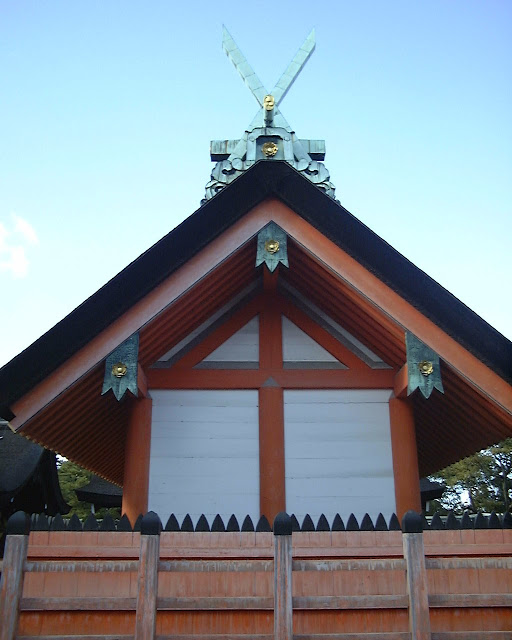Hyakunin Isshu (One Hundred Poets, One Poem Each): Poem 19 (Lady Ise)

Hyakunin Isshu, Poem 19
Naniwagatamijikaki ashi nofushi no ma moawade kono yo osugushiteyo to ya
????????????????????????????
Are you telling meto go through this lifewithout meeting even as briefas the space between jointson the reeds at Naniwa Inlet"
Lady Ise (875-938)
[Sumiyoshi Shrine, Osaka (Photo Ad Blankestijn)]
The hopeless situation of the poetess who can not meet her lover even for the briefest time.
The first three lines in Japanese (which have ended up at the end of the poem in my translation) are an introduction (jokotoba). "Naniwa" is the traditional name for the Osaka area; "-gata" (like in Niigata) is an inlet in which the beach is revealed at low tide. "Ashi" (or yoshi) is the common reed (Phragmites australis); it often figures in Japanese classical poetry for its slimness or beauty when seen reflected in water, and the reeds in the inlets of Naniwa Bay were especially favored among poets. Reed also has very short segments between its nodes, and that idea is used here to suggest the briefest of moments. "Yo" is "this life," but also the word for a segment of a reed, and therefore a case of word association (engo) with ashi and fushi.
[Heron and Reed, by Suzuki Harunobu (Photo Wikipedia)]
This poem was written by Lady Ise (also called "Ise no miyasudokoro," c. 875 - c. 938), who was born as the daughter of Fujiwara no Tsugukage. In the Heian-period aristocratic ladies did not use their per...
Fuente de la noticia:
japannavigator
URL de la Fuente:
http://www.japannavigator.com/
| -------------------------------- |
| ?? Learn Japanese ?? How to Say "Just Kidding!" in Japanese ? #Shorts |
|
|





